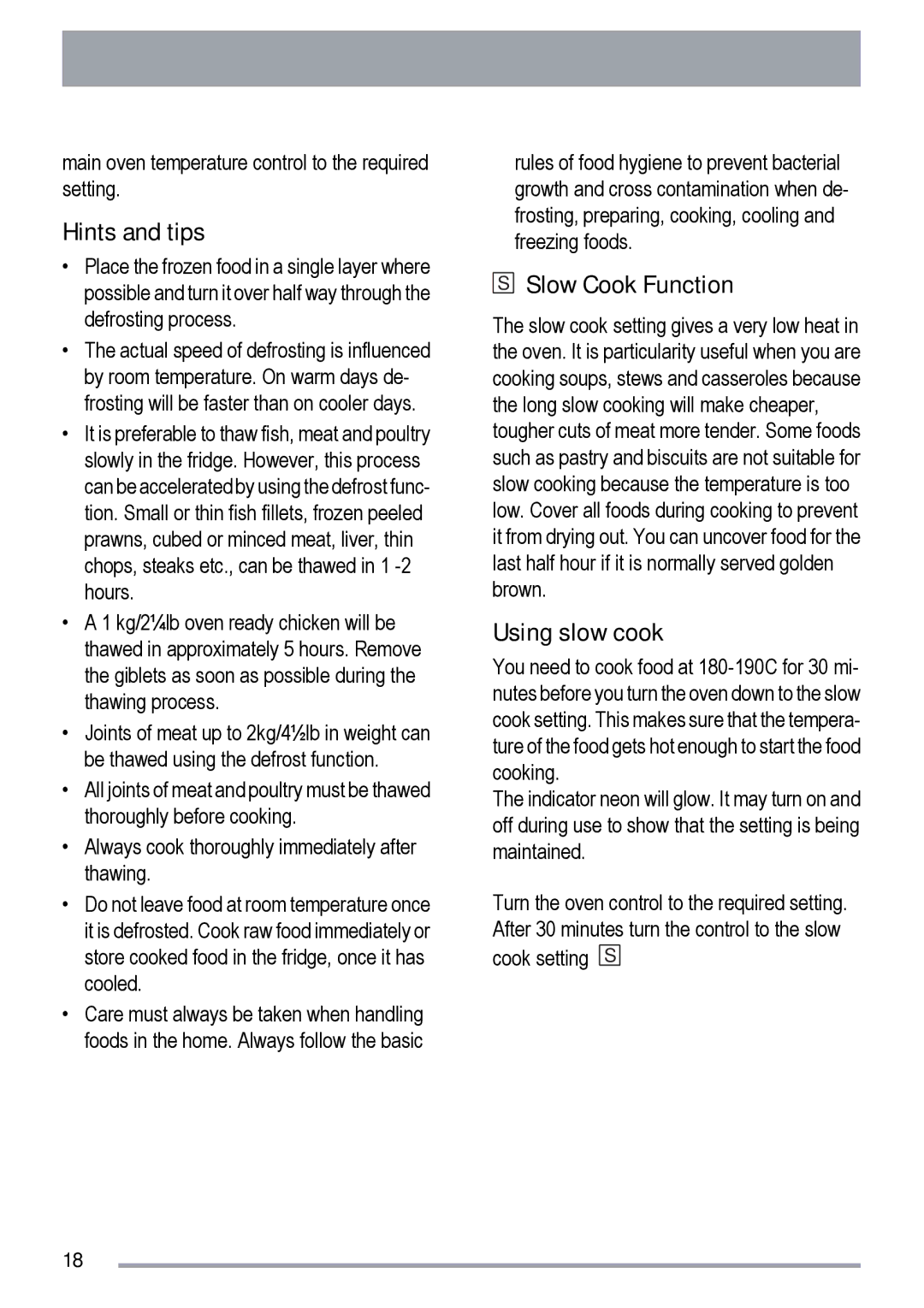
main oven temperature control to the required setting.
Hints and tips
•Place the frozen food in a single layer where possible and turn it over half way through the defrosting process.
•The actual speed of defrosting is influenced by room temperature. On warm days de- frosting will be faster than on cooler days.
•It is preferable to thaw fish, meat and poultry slowly in the fridge. However, this process can be accelerated by using the defrost func- tion. Small or thin fish fillets, frozen peeled prawns, cubed or minced meat, liver, thin chops, steaks etc., can be thawed in 1
•A 1 kg/2¼lb oven ready chicken will be thawed in approximately 5 hours. Remove the giblets as soon as possible during the thawing process.
•Joints of meat up to 2kg/4½lb in weight can be thawed using the defrost function.
•All joints of meat and poultry must be thawed thoroughly before cooking.
•Always cook thoroughly immediately after thawing.
•Do not leave food at room temperature once it is defrosted. Cook raw food immediately or store cooked food in the fridge, once it has cooled.
•Care must always be taken when handling foods in the home. Always follow the basic
18
rules of food hygiene to prevent bacterial growth and cross contamination when de- frosting, preparing, cooking, cooling and freezing foods.
SSlow Cook Function
The slow cook setting gives a very low heat in the oven. It is particularity useful when you are cooking soups, stews and casseroles because the long slow cooking will make cheaper, tougher cuts of meat more tender. Some foods such as pastry and biscuits are not suitable for slow cooking because the temperature is too low. Cover all foods during cooking to prevent it from drying out. You can uncover food for the last half hour if it is normally served golden brown.
Using slow cook
You need to cook food at
The indicator neon will glow. It may turn on and off during use to show that the setting is being maintained.
Turn the oven control to the required setting. After 30 minutes turn the control to the slow cook setting S
